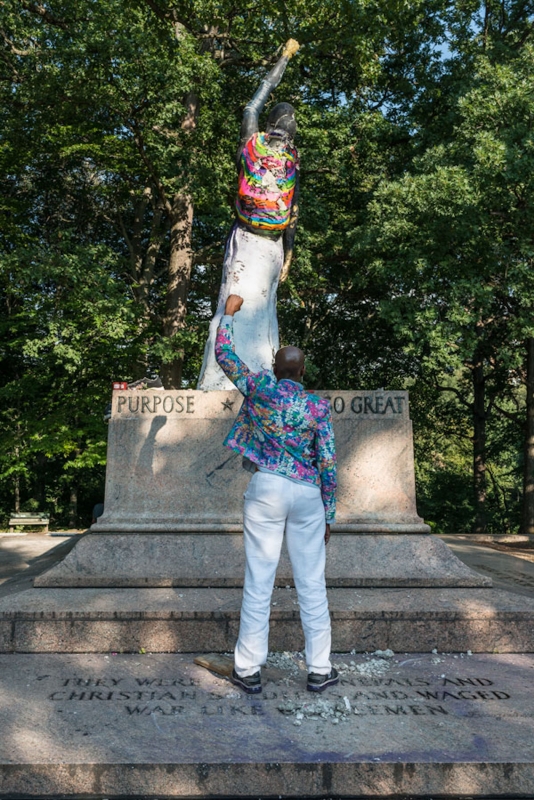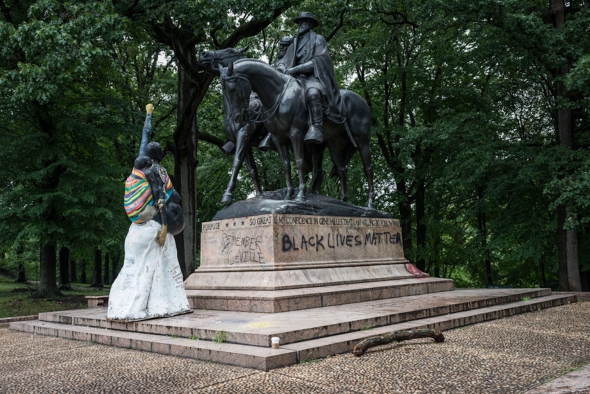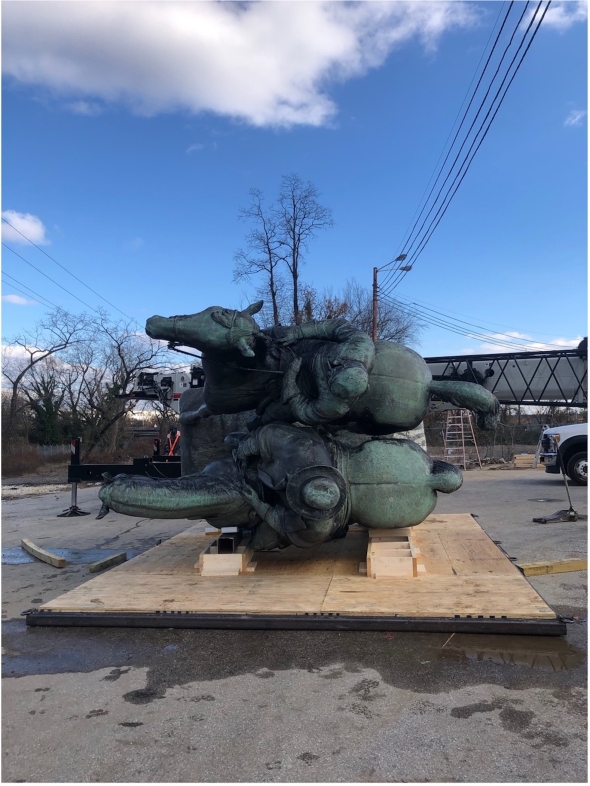Thesis: Marian April Glebes
This Brick Is Historic Preservation; This Brick Is Not A Dead White Guy On A Horse: Baltimore City Artist-Run Spatial Practices And Responses To Confederate Monuments As Experimental Preservation
As monuments to hate were toppled by activists nationwide in 2017 after a deadly white supremacist rally in Charlottesville, NC, Baltimore City removed four of its contentious monuments in the dark of night with no prior warning to the public nor to the professionals tasked with their stewardship. This monumental move defied the preservation easements held by the State Historic Preservation Office, creating tensions between the local preservation practitioners who were tasked with the monuments’ caretaking and the public’s safety and welfare and the federally sanctioned management practices for historic properties. In Baltimore City, the local community’s radical interventions at contentious monument sites were at odds with traditional methods of historic preservation.
I argue that if historic preservation does not make some significant changes – in theory and in practice – it will neither sustain itself nor approach its full potential as a discipline and a movement. If artist-run interventions at the Robert E. Lee and Stonewall Jackson Confederate monument in Baltimore City are considered a counter-monument, and counter-monuments contribute to cultural heritage and collective memory, then artist-run spatial practices should be considered acts of historic preservation. Artistic and artist-led public responses to place-based events and monuments to hate can challenge and expand methods of preservation and offer a form of stewardship as managing change while responding to contemporary concerns.




